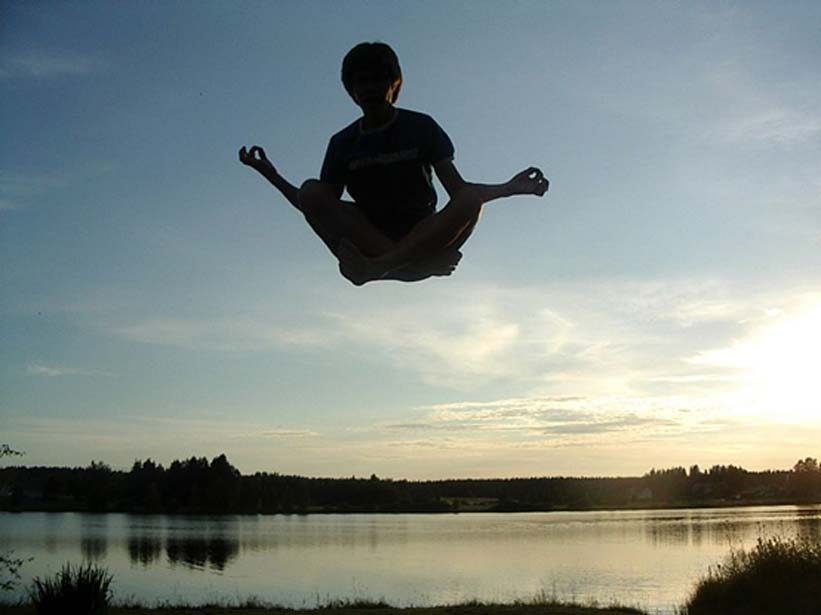
Ancient Levitation – Magicians Secret Crafts Revealed
- By ashley cowie
- 1
Since the dawn of its existence, mankind has developed survival skills. One of the very basic survival skills modern man does not even pay much attention to, is the need to make sense of our environment. If we can anticipate the next actions of a predator, or an opponent, we can counter an attack and survive. This primitive survival mechanism operates within the parameters of our subconscious reptile brain. Our incoming senses register – we see a snake - and a message is relayed down the spine at lightning speed – we jump. This is an automatic reaction. Only later may our rational brains take charge and reason that it was a fake snake. What we think we see, is often not what we are looking at. This concept is illustrated in the notes of a 15th century book written by a natural born trickster, Thomas Betson, a monk at Syon Abbey in Middlesex. Forsaking the code of secrecy of illusionists, Betson wrote down the inner mechanics of a trick in which he stashed a ‘beetle inside a hollowed-out apple so that when it began to mysteriously rock back and forth, people believed it to be possessed’.

Our brains will try to make sense of what we see. (Photo by Muu-karhu CC BY-SA 3.0)
It would have taken a pretty smart person to have watched that apple wobbling on a table and to have suspected that a tiny creature might have been hidden inside it. Most of us, based on the available data provided by our five sensory streams, would have measured up the legs of the table or looked for signs of a thread having been attached to the apple. But a hidden beetle! Who would have thought!
Let us now jump from this 15th century magic trick to your home on a Sunday morning. You are trying to watch YouTube, while the kids are online gaming and granny is on Skype, all at the same time. Your router really struggles to handle the data flow and you notice a slowing down in processing speed. Similarly, when we experience a visual, or optical illusion, the visual system is assaulted with so much conflicting data, that our brains struggle to keep up. For a brain, to have efficiently considered all of the possibilities in which the apple could have moved, “our brain would need to be bigger than a 2-story house, and still then it probably wouldn’t be enough,” says Susana Martinez-Conde, of the State University of New York.
The Inner Mechanics of Illusion
At the moment of the big reveal in a magic trick, observers are cast into a state of bamboozlement, entirely open to suggestion and become victims to their own visual systems, which urges their brains to jump to conclusions, in order to predict what’s coming next. In hard reality, drawing quick conclusions on how an illusion was ‘done’, only lures observers further away from the actuality of the magical situation, for they fail to think laterally enough to match the magician’s level of deceit. In that split second when we see a magic trick unfold our egos are laid bare; by not figuring out how the magician “wobbled the apple”, implies one is not as clever, as one would like to think. This is why people are so quick to believe that the illusionist must have secret, spiritual-powers, because not for a second would any of us stop to consider that we just don’t get it! None of us want to believe we are gullible.
The visual system coupled with the ego’s response to magic form a closed-loop, which magicians easily control. By grasping the visual system’s flaws and restraints, magicians and illusionists have boggled our minds for thousands of years, aiding in the creation of entire religions and philosophies, with ‘apparently’ physics defying the demonstrations of magic. When did people first begin to question the human visual system? For it is a fact, that before magicians could play with the systematic failures of the visual process, its extremes and boundaries must have been pioneered, mapped and fully understood.
Quest for the Eye-Brain Bridge
History books are peppered with the musings of both magically and scientifically orientated minds who questioned the mechanics of the eye, to better understand why it can so easily be fooled by certain images and motions. Rock art created as far back as fifteen thousand years ago appears to dance when observed under a flickering fire torch.
- Jean Eugene Robert-Houdin, The Father of Modern Magic Who Stopped a Revolt with His Abilities
- Ancient Magic: The Illusions Created in Temples by Amazing Inventions
- Semar: The Fallen God and Divine Jester of Indonesian Mythology

Aristotle. National Museum of Rome (Public Domain)





